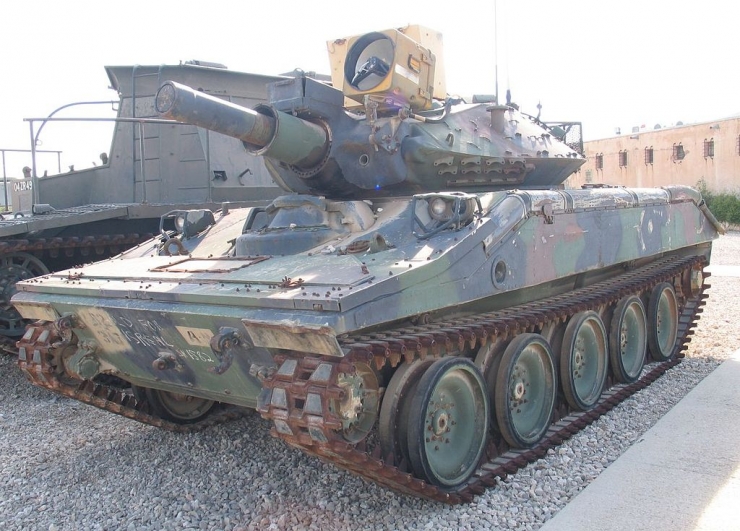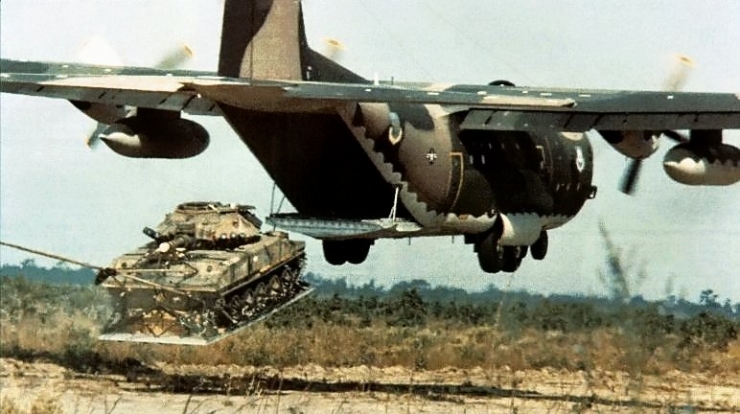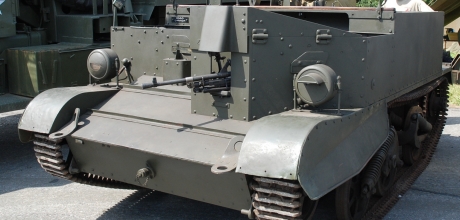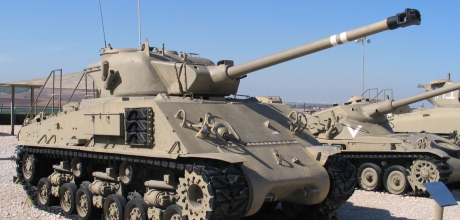Despite the issues related to the entire Sheridan development and the turret design, the combat results of the vehicle were actually not that bad. “Mixed” would in fact be the correct word describing the first impressions of the vehicle from Vietnam.
Deployment in Vietnam
As was written in the first and second part of the Sheridan series, the M551 saw the first service in the Vietnam War, which was also to a large extent its raison d'être. The first 64 vehicles arrived in Vietnam in the January of 1969 and were split between the two units:
- 1st Squadron, 11th Armored Cavalry Regiment (1/11 ACR)
- 3rd Squadron, 4th Armored Cavalry Regiment (3/4 ACR)
There was one major difference between the two units, which heavily influenced their opinions on the Sheridan. While the 1/11 ACR was equipped mostly with the M113 armored personnel carriers, the 3/4 ACR was equipped originally with the M48 Patton tanks. Obviously, despite being tracked, both vehicles behaved very differently and this in turn affected the nine week long crew training.
The 1/11 ACR men (formerly M113 crews) were actually quite excited about the Sheridans. The M551 offered vastly improved firepower compared to their old vehicles and while they did recognize the Sheridan flaws, they were training as tankers “from scratch” and as such they understood the flaws as something “natural”, as obstacles to overcome. They loved the Sheridan speed and off-road capabilities (especially the fact that unlike the M113, the M551 was not prone to throwing tracks even during wildest maneuvers), the smooth ride and the suspension reliability.

The 3/4 ACR crews had exactly the opposite opinion. Compared to their previous fifty ton rugged and reliable M48 battle tanks, the Sheridan looked like an over-engineered toy. Furthermore, the tankers received only shortened training course citing their previous experience with tanks.
In a way, the Sheridan was the exact opposite of the M48. Compared to the M48 it was not reliable at all, required extensive maintenance and everything was getting broken all the time even without the complicated Shillelagh launch system (the Sheridans in Vietnam were not equipped with guided missiles). This all – along with its poor protection – led to many complaints from the former M48 crews, who felt very unsafe in their new aluminum-skinned vehicles.
This difference in perception based on the unit background was actually nothing new – same thing happened thirty years earlier to the Germans with the Ferdinand tank destroyers. Two types of units received them – one was used to lighter agile vehicles while the other was a StuG unit, used to wait in ambush. The results of the first unit (that actually drove the Ferdinand around a lot) were a disaster while the second unit (using the Ferdinand as an ambush vehicle) was extremely effective, earning the vehicle its murderous reputation.
One of the worst incidents involving the M551 happened in February 1969, when one Sheridan ran over a mine. The blast killed the driver and initiated secondary ammunition explosions, critically injuring the rest of the crew. This led to another wave of complaints since the crews actually did not understand why the army took their beloved M48’s and replaced them with this “oversized paperweight”. The incident also resulted in one modification – the bottoms of the Sheridans were improved by adding an additional titanium alloy plate that weighed each almost a ton. Some crews also made their own modifications – for example the drivers added sandbags under their seats to protect them from mine explosions. Overall however the crews were slowly getting used to the fact that the Sheridan is actually a light tank and cannot serve as a main battle tank without seriously endangering the crew. Not all the “tanker” feedback from 3/4 ACR was bad though – the new “Beehive” flechette shells were extremely effective and on 10.3.1969 near the town of Tay Ninh, the Sheridans alone using these shells slaughtered an entire unit of Viet Cong infantry. Another fight near Bien Hoa saw at least eighty Vietnamese fighters literally torn apart by the thousands of the tiny flechette needles. By the end of 1969, around 200 Sheridans were operating in Vietnam Despite the issues with the vehicle, the Sheridan experience was actually not that bad and they were some of the last armored vehicles to leave Vietnam. Around 100 were lost in the war – but mostly due to the fact they got stuck in mud and were destroyed by their own crews.
Across the ocean
The Sheridans were actually also deployed in Europe by the time the Vietnam War raged on. Unsurprisingly, the mild climate saw the Sheridan performance improve by a lot, especially when it came to reliability. The Sheridan units developed quite effective tactics to deal with the perceived danger of hordes of Soviet armor – hit and run style, using the superior range of the Shillelagh missiles. The M551 would fire two Shillelagh missiles at long ranges – at 2000 meters it could not be threatened by the Soviet tank guns – and retreat quickly, leaving the enemy confused and reeling. In 1971, the Sheridans were equipped with a new ruby laser AN/VVG-1 rangefinder – such vehicles bore the M551A1 designation. This posed a slight problem for the “European” Sheridans as – during the exercises – the friendly soldiers playing “bad guys” could have their sight damaged by the lasers, but this issue was remedied by some rule restrictions when training and for live use, this would obviously not matter anymore. From 1978 onwards, the phasing out of the Sheridans slowly started with the active vehicles being replaced either by the M60A1 and M60A3 tanks or the M113 APC’s temporarily with the final “replacement” being the Bradley vehicle family. In the end, the only unit with these vehicles still in active service was the 4th Battalion of the 68th Regiment, 82nd Airborne Division. The rest of the Sheridans ended up on military scrapyards on in repair plants as the spare parts source.

Final war of the Sheridan
Before its final retirement in 1996, the M551 saw two more conflicts – Operation “Just Cause” (the invasion of Panama) and the Desert Storm.
In Panama, the Sheridans of the 82nd Airborne were used first to capture the airfield and were air-dropped around the area. Due to bad weather, some Sheridans actually ended in a swamp nearby – their crews were not amused. The combat use itself however was satisfactory – the vehicles were agile and the 152mm HE shells had sufficient demolition power in city combat to get rid of entrenched Noriega’s troops. It was however the Desert Storm operation that proved to be the final war of the Sheridan. The first 55 vehicles were deployed in Persian Gulf by 1991 and until the Abrams tanks arrived, they represented the most American firepower on the battlefield. It was here that the Shillelagh missile was used operationally for the first (and final) time, knocking out an Iraqi Type 59 main battle tank. The vehicles also proved to be actually very reliable with proper maintenance here but even that did not save. After the war, the Sheridans were also used for a while as OPFOR vehicles (training units representing the Soviets on the battlefield during military exercises) and it is this role that their career finally ended in 1998.









